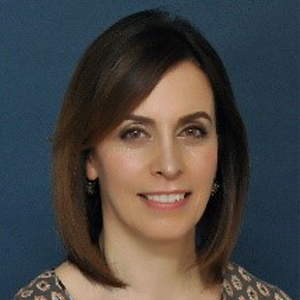
Different field, different problem, same solution: metabolism!
Metabolism has captured the interest of researchers across many different biological disciplines. In some fields, interest in longstanding metabolic questions has been renewed. In other areas, new metabolic connections are being made for the first time. No matter the topic, however, metabolism studies evoke pathway charts and methodological approaches that may not be common knowledge in all disciplines, and this could hinder dialogue between investigators. Moreover, many of the same metabolic patterns are observed consistently in different disease settings, animal models and cell types.
The purpose of our symposium at Discover BMB, the annual meeting of the American Society for Biochemistry and Molecular Biology, which will be held in March in Seattle, is to bring together researchers from disparate areas of biology who speak the common language of metabolism. We want to facilitate interactions between investigators who may be thinking about the same metabolic themes, but who are not typically at the same meetings or conferences. The presentations will not be organized by discipline but rather by metabolism topic, with the aim of stimulating new discussions and collaborative opportunities.
Our symposium will feature research examining metabolism at multiple levels — ranging from whole body to cells and organelles. We will hear how the same metabolic programs are implicated not only in diseases such as cancer and neurodegeneration but also in fundamental biochemical processes including immune response and vision.
Keywords: Metabolism, metabolomics, lipids, physiology, interorgan communication, mitochondria, lysosomes, isotope tracing.
Who should attend: Anyone interested in metabolism at any level in any context.
Theme song: “What Makes You Beautiful” by One Direction, because metabolism lights up all of our worlds — and in honor of the infamous “What Makes Glycolysis” parody (look it up!).
This session is powered by ox phos (platinum-level sponsor) and substrate-level phosphorylation (gold-level sponsor).
Speakers
Metabolic physiology
Gary Patti (chair), Washington University in St. Louis
Deb Muoio, Duke University
Nada Kalaany, Harvard Medical School
Matt Gentry, University of Kentucky
Metabolism in health and disease
Jason Tennessen, Indiana University
Jing Fan, University of Wisconsin
Organelle metabolism
Nika Danial (chair), Harvard Medical School
Dale Abel, University of California, Los Angeles
Roberto Zoncu, University of California, Berkeley
Natalie Niemi, Washington University in St. Louis
The complete list
Learn about all 11 symposia planned for Discover BMB 2023:- Protein Machines and Disorder
- Regulation of RNA
- Organelles, Mechanisms and Phase Properties of Cellular Quality Control
- Lipid Dynamics and Signals in Membrane and Protein Structure
- Frontiers in Carbohydrate Synthesis and Recognition
- Bias In, Bias Out in Data Science
- Cell Signaling — New Tools and Emerging Concepts
- Education and Professional Development
- Biochemistry of Elemental Cycling
- Advances in Organismal and Cellular Metabolism
- Artificial Intelligence and Machine Learning in Structural Biology, Drug Design and Systems Biology
Enjoy reading ASBMB Today?
Become a member to receive the print edition four times a year and the digital edition monthly.
Learn moreGet the latest from ASBMB Today
Enter your email address, and we’ll send you a weekly email with recent articles, interviews and more.
Latest in Science
Science highlights or most popular articles

Bacteriophage protein could make queso fresco safer
Researchers characterized the structure and function of PlyP100, a bacteriophage protein that shows promise as a food-safe antimicrobial for preventing Listeria monocytogenes growth in fresh cheeses.

Building the blueprint to block HIV
Wesley Sundquist will present his work on the HIV capsid and revolutionary drug, Lenacapavir, at the ASBMB Annual Meeting, March 7–10, in Maryland.

Gut microbes hijack cancer pathway in high-fat diets
Researchers at the Feinstein Institutes for Medical Research found that a high-fat diet increases ammonia-producing bacteria in the gut microbiome of mice, which in turn disrupts TGF-β signaling and promotes colorectal cancer.

Mapping fentanyl’s cellular footprint
Using a new imaging method, researchers at State University of New York at Buffalo traced fentanyl’s effects inside brain immune cells, revealing how the drug alters lipid droplets, pointing to new paths for addiction diagnostics.

Designing life’s building blocks with AI
Tanja Kortemme, a professor at the University of California, San Francisco, will discuss her research using computational biology to engineer proteins at the 2026 ASBMB Annual Meeting.

Cholesterol as a novel biomarker for Fragile X syndrome
Researchers in Quebec identified lower levels of a brain cholesterol metabolite, 24-hydroxycholesterol, in patients with fragile X syndrome, a finding that could provide a simple blood-based biomarker for understanding and managing the condition.


